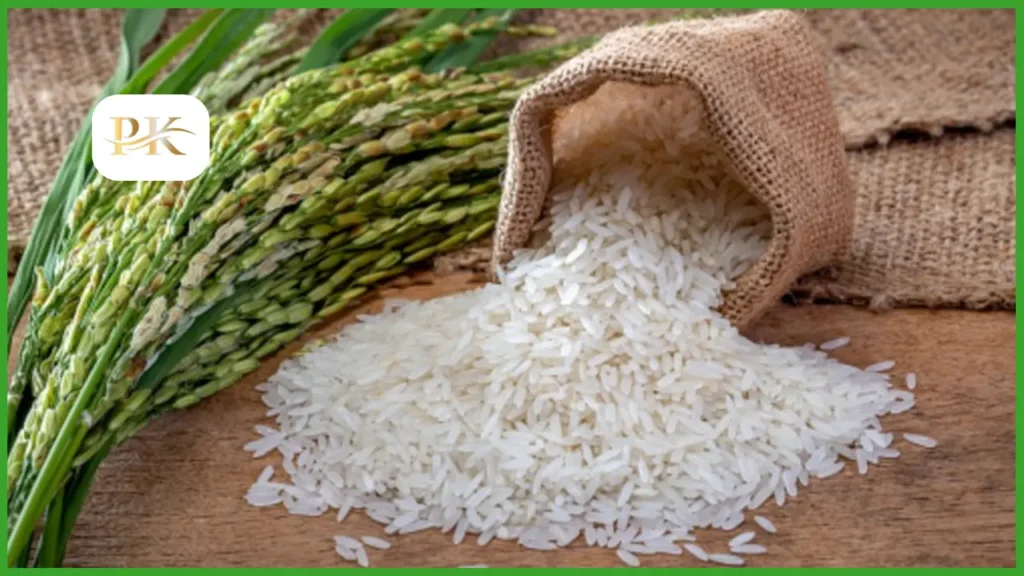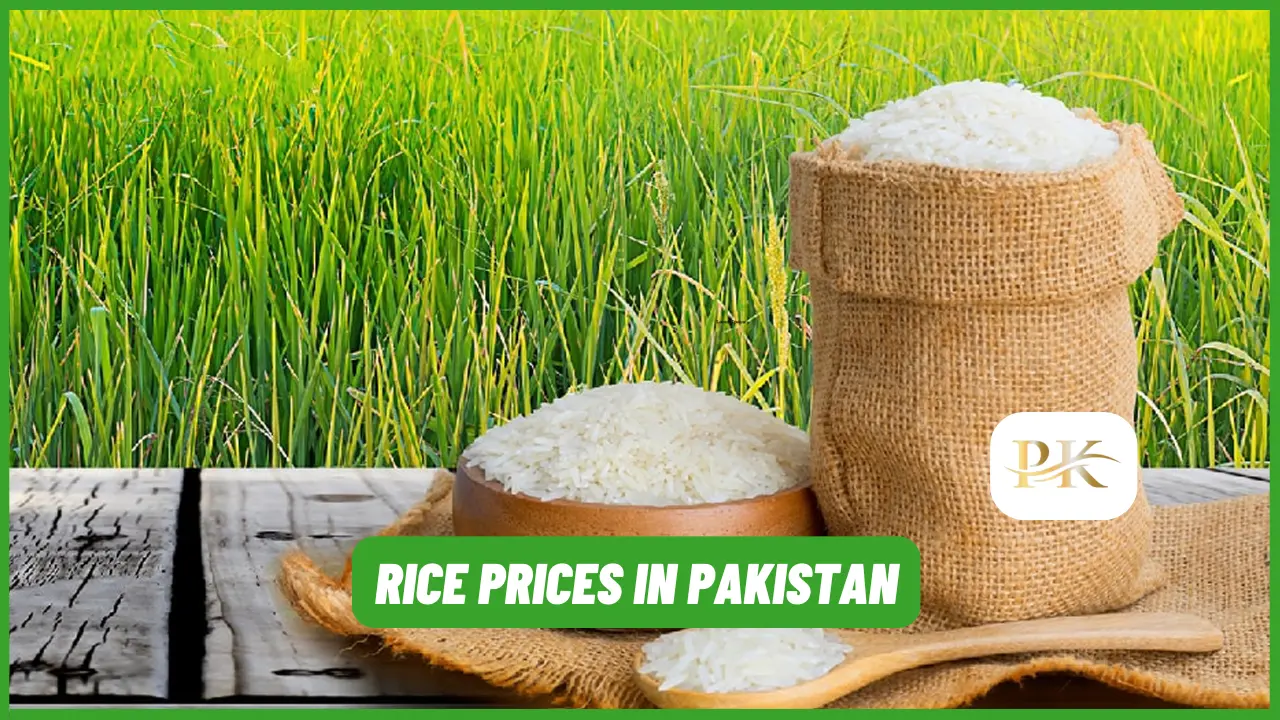Rice Price in Pakistan today ranges from Rs. 310 to Rs. 420 per kilogram, with 50KG sacks priced between Rs. 15,050 and Rs. 16,400. These prices are influenced by factors like crop yield, government policies, and international demand.
Rice is a cornerstone of Pakistan’s economy, both as a staple food and a key agricultural export. It supports millions of farmers, contributes to GDP, and plays a vital role in food security across the country.
Rice Price in Pakistan Today
The price of rice in Pakistan today varies depending on the quantity and quality, with rates ranging from Rs. 310 to Rs. 420 per kilogram. Here is a detailed price list:
Rice Price in Pakistan
| Quantity | Low Price (Rs.) | High Price (Rs.) |
|---|---|---|
| 1 KG | 310 | 420 |
| 25 KG | 7,700 | 8,040 |
| 50 KG | 15,050 | 16,400 |
| 1 Ton | 344,000 | 439,000 |
Also Visit: Mustard Price in Pakistan
Factors Affecting Rice Prices
Several factors contribute to the fluctuation of rice prices in Pakistan. Understanding these elements helps explain the current trends in the market.
- Supply and Demand Dynamics: The balance between rice availability and consumer demand directly impacts prices.
- Impact of Weather and Crop Production: Weather conditions like droughts or floods can affect crop yields and prices.
- Government Policies and Subsidies: Government decisions, including subsidies and tariffs, influence rice price stability.
- Role of Exports in Price Fluctuations: The demand for rice in global markets affects local price trends.

Strategies for Managing Rice Prices
Consumers can stay informed by tracking price trends and understanding factors affecting rice costs. Comparing prices across different retailers and local markets helps in making better purchasing decisions.
Buying rice in bulk or during harvest season can save money, as prices tend to be lower at these times. Additionally, looking for promotions and discounts offered by retailers can help reduce costs.
Sustainable farming practices, such as water-efficient irrigation and organic farming, can reduce production costs and environmental impact. These practices also contribute to stabilizing rice supply, leading to more consistent pricing over time.
Rice Prices with Types for 40 KG
The price of rice varies based on the type and quality. Below is a detailed list of prices for different rice varieties in 40KG quantities:
Rice Prices with Types
| Rice Type | White | Sella | Steam |
|---|---|---|---|
| Kainat 1121 B1 Broken | Rs. 2560 | Rs. 2700 | Rs. 3150 |
| Super Fine | Rs. 3200 | Rs. 3580 | Rs. 4000 |
| Super Basmati Old | Rs. 4600 | Rs. 5200 | Rs. 5500 |
| Kainat 1121 Short Grain | Rs. 3300 | Rs. 3390 | Rs. 3500 |
| C 9 | Rs. 2700 | Rs. 2840 | Rs. 3150 |
| Super Kainat Rice Rate | Rs. 4100 | Rs. 4250 | Rs. 4500 |
| 386 Basmati | Rs. 2900 | Rs. 3400 | Rs. 3590 |
| Super B2 Broken | Rs. 2350 | Rs. 2450 | Rs. 2700 |
| Kainat 1121 B2 Broken | Rs. 2150 | Rs. 2360 | Rs. 2600 |
| Irri 6 | Rs. 2300 | Rs. 2500 | Rs. 2750 |
| Kainat 1121 | Rs. 5100 | Rs. 6100 | Rs. 6250 |
| New Super Basmati | Rs. 4500 | Rs. 4660 | Rs. 5300 |
| Super Short Grain | Rs. 3050 | Rs. 3200 | Rs. 3400 |
| 1509 | Rs. 4280 | Rs. 4590 | Rs. 5000 |
| Supri | Rs. 2670 | Rs. 2890 | Rs. 3000 |
Also Visit: Engro Fertilizer Price in Pakistan
How Government Policies Impact Rice Prices
Government policies play a significant role in shaping rice prices by regulating various factors affecting the market. These measures can either stabilize or cause fluctuations in prices.
- Import and Export Regulations: Restrictions on rice imports or exports, such as tariffs or quotas, directly impact local supply and demand, influencing prices.
- Government Support and Subsidies: Financial assistance to farmers, such as subsidies on fertilizers or irrigation, can reduce production costs, making rice more affordable for consumers.
- Price Controls and Market Regulations: Government-imposed price ceilings or floors help protect consumers from excessively high prices, ensuring stability in the rice market.
Overall Conclusion
The rice price in Pakistan is influenced by various factors such as supply and demand, government policies, and international trade dynamics. Understanding these elements helps both consumers and producers navigate the fluctuating prices.
As rice continues to be a staple food and an essential export, its price plays a crucial role in the country’s economy. Ensuring stable prices through sustainable farming practices and effective government intervention can support both farmers and consumers.

